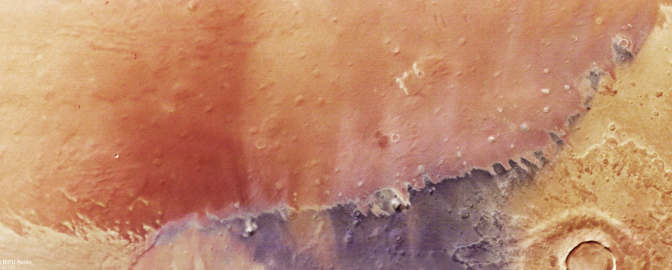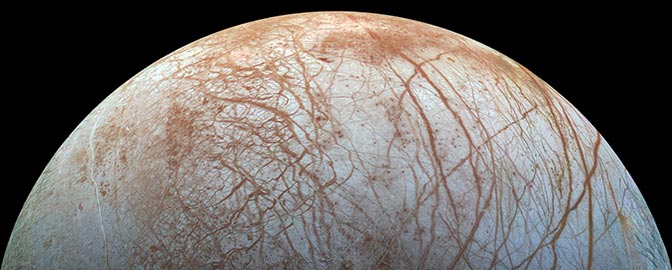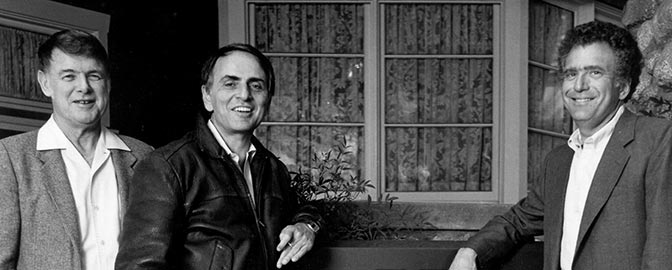Ten years after Pluto, New Horizons faces a new threat

Written by
Asa Stahl, PhD
Science Editor, The Planetary Society
July 14, 2025
When New Horizons became the first spacecraft ever to explore Pluto, it made the front pages of nearly 500 newspapers across all seven continents. Later, when the mission beat its own record and explored another world even farther away, Brian May, astrophysicist and guitarist for Queen, wrote his first original piece of music since the late 1990s to celebrate. Now, at the 10-year anniversary of the mission’s Pluto flyby, we mark a grimmer moment: the newly proposed budget for NASA would shut down New Horizons midflight.
As you read this, New Horizons is almost twice as far away as Pluto. It is actively exploring the outer reaches of the Solar System and making new discoveries every year. If the U.S. Congress rejects this budget and stops the spacecraft from being prematurely shut down, its mission could continue through the 2030s or later.
But this is not the first time New Horizons has come under threat.

The long road to Pluto
It took nearly 20 years of advocacy to launch a spacecraft to Pluto. Between 1990 and 2005, NASA missions to Pluto were effectively canceled at least six times. Some were dismissed as too expensive, others too complicated or not important enough. Political support never seemed to come together just when it was needed.
“It was really tough,” said Alan Stern, PhD, principal investigator for New Horizons. “It felt sometimes like being trapped in a maze.”
But one thing remained constant. Every time New Horizons was under threat, The Planetary Society was there. When NASA rejected a Pluto mission concept in the early 1990s for being too expensive, the Society approached Russia about providing a launch vehicle to lower the mission’s cost. And when NASA finally accepted a Pluto mission only to cancel it again a few years later, The Planetary Society organized a massive postcard-writing campaign that sent Bill Nye and Lou Friedman, then executive director of the Society, to personally deliver letters to Capitol Hill.

“It took a lot of stamina, and a lot of persistence,” Stern said. “Every occasion on which I asked Lou Friedman or Bill Nye or anyone in The Planetary Society for help, they were at our shoulder immediately.”
Congress took notice. By the end of that year, NASA announced it would accept new proposals for a Pluto mission. One project, led by Stern, became New Horizons.
The mission would go on to be defunded twice by the U.S. Congress. Each time New Horizons was effectively cancelled, The Planetary Society organized campaigns to get the money back — and eventually, it stuck. The mission launched on Jan. 19, 2006.

“We wouldn’t have done New Horizons if it hadn’t been for the support of The Planetary Society, and not just once — many times, over many years,” Stern said. “The Planetary Society was always there.”
Pluto, unveiled
All this effort paid off when New Horizons flew by Pluto on July 14, 2015.
Instead of seeing a world frozen still, the mission unveiled a Pluto full of surprises. It discovered jagged mountains and deep valleys, sweeping dunes, hints of ice volcanoes, the largest glacier in the Solar System, and evidence of a possible underground ocean of liquid water. The findings revolutionized our sense of faraway, icy worlds. It brought them into focus as dynamic places that could even potentially host life.
“I thought the Solar System had saved the best for last,” said Stern. “Pluto just delivered and delivered and delivered these major headlines.”
Pluto wasn’t New Horizons’ last stop, either. Four years later, the mission flew by Arrokoth, the farthest Kuiper Belt Object ever explored. Its images revealed that Arrokoth had formed when two worlds stuck together, making a snowman-like shape. The discovery changed how scientists thought about the building blocks of planets and how they form worlds.
“Arrokoth has been a tremendous gift to planetary science. We couldn't have asked for anything more,” Stern said.

Pushing the frontier
NASA has extended New Horizons’ mission until the end of the decade. Now almost twice as far away as Pluto and billions of kilometers past Arrokoth, there is still a lot for the spacecraft to explore.
New Horizons has enough fuel left to navigate toward another Kuiper Belt Object if scientists can find a suitable target. Meanwhile, the mission is using its onboard camera to study the worlds of the Kuiper Belt. It has found hints that the belt is far larger than expected, or that there may even be a second belt farther away. Either possibility would transform our sense of what planetary systems are like around other stars.
New Horizons is also probing the Sun’s influence on the outer reaches of the Solar System. After Voyager 1 and 2, it is slated to become the third functioning spacecraft ever to enter interstellar space. New Horizons is carrying much more advanced instruments than the Voyagers, though, and will be able to probe these regions in more detail.
Saving New Horizons
These are the sorts of discoveries we stand to lose if New Horizons is canceled. Shutting down the spacecraft would mean abandoning our best window into the outer Solar System — one already built, paid for, and working smoothly. Worlds would go unexplored, and mysteries would remain unsolved.
“We're the only spacecraft out there,” Stern said. “There’s nothing else planned to come this way.”
But the cost of cancellation would not just be scientific. All the labor that went into designing the mission and building the spacecraft, the years spent wringing meaningful measurements and beautiful images out of it, all the people who dedicated their careers to New Horizons, all those who were inspired by it, everyone who stood up and spoke out again and again to say that this mission mattered to them — all would feel the loss.
Now, as ever, The Planetary Society is standing by New Horizons. We are encouraging Congress to reject the White House’s plan and organizing ways you can show elected officials that space science and exploration matter. Whether we are sending postcards, petitions, or Bill Nye himself to the Capitol, The Planetary Society will advocate for this mission and all other science projects facing pointless termination.
If enough people take action, there is still time to save NASA science.
Support our core enterprises
Your gift today will go far to help us close out the year strong and keep up our momentum in 2026.
Donate

 Explore Worlds
Explore Worlds Find Life
Find Life Defend Earth
Defend Earth




